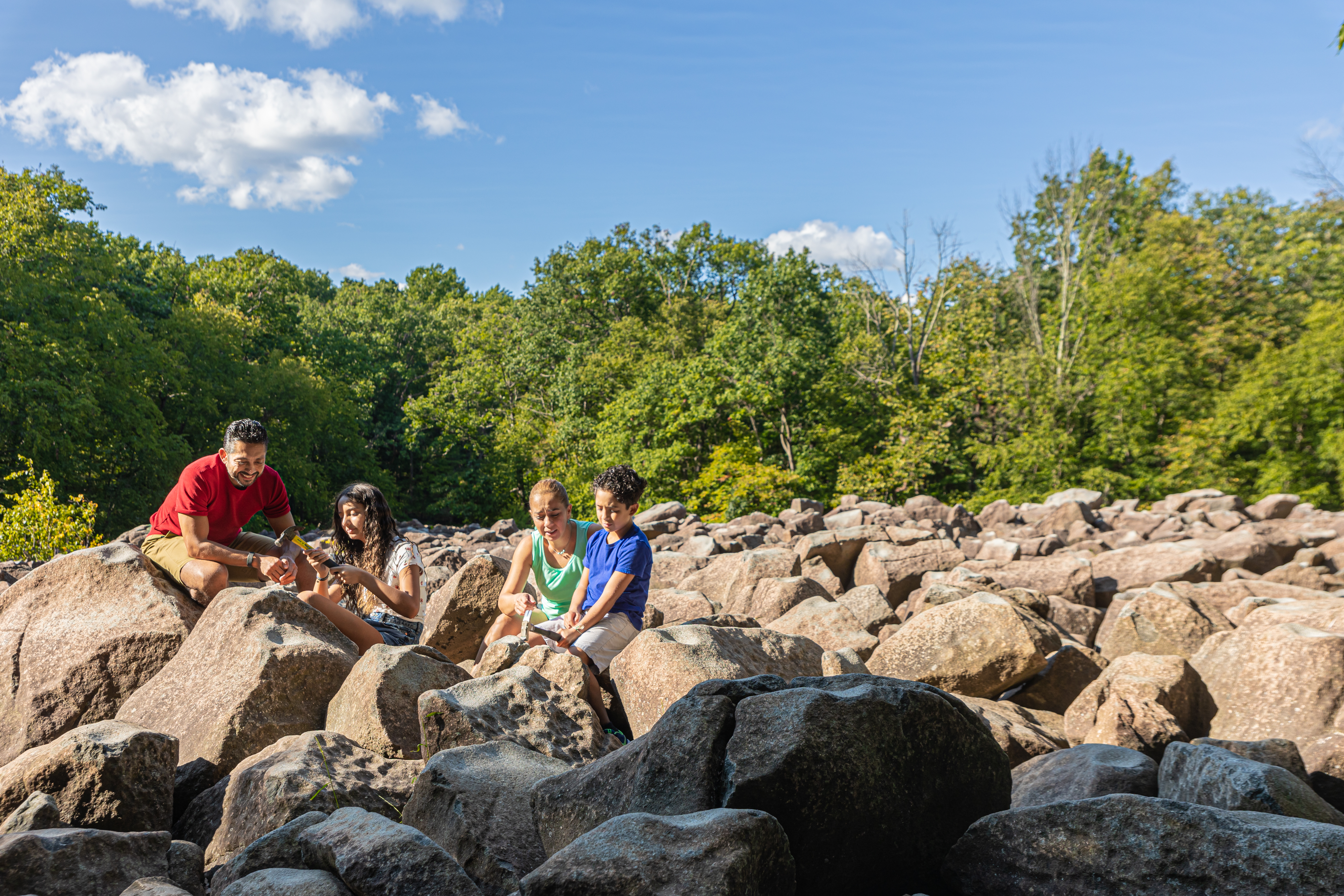About Lithophones, Great Stalactite Organs in Luray Caverns and Vietnamese Đàn đá Instruments.
While looking to my Instagram reels, I spotted this video on 'archaerohistories' and there was this pre-historic musical stone.
When I saw this video, it was really cool and kinda nice to hear. It cuts and drowns out the other noise and the noise is very similiar to xylophone.
 |
| Ringing Rocks Park in Pennslyvania |
Kids would especially appreciate the sound of the dings and dongs while they hit the sticks with rocks; for instance, I delved into my understanding of this wonderful instrument and noticed one place in Philadelphia called 'Ringing Rocks Park'.
From a News segment, the reporter was explaining about this wonderful place and how it was built. Apparently, the rocks were in formation for about 200 million years into its prime. Once you bring your hammer, you can hit it with the rocks, and they make different noises.
The other one that I found out was in Luray Caverns in Virginia. The Luray Caverns is home to the Worlds Largest Musical Instrument (by Guinness World Records) and held the title since the 50s. 
Great Stalactite Organ in Luray Caverns.

By playing it, you would use the organs (the musical ones, not the actual ones) by hitting the tunes, and the stalactites then create buzzing sounds. The end? The projection of the sound itself translates to a echo in a large space.
One of the videos I watched was from Rob Scallon. In February 2023, he was invited by park officials to play the organ inside the cave.
Bill Huffman, Director of Marketing at Luray Caverns has talked about the cave at itself and how the instrument works. He connected his guitar into a speaker to hit a few notes. It's fascinating to look at how music and nature plays a role into creating a body of work.
Feel free to check it out below!
Lithophones are an amazing piece of work and an underrated musical instrument. Its great and fresh for the kids to play, works exactly like a Xylophone and with a little bit of creativity, you can easily do something like this.
To end this article, you can check out this Vietnamese musical instrument called, 'Đàn đá'. The 'đá' means stone and 'Đàn' means instrument. Check it out below!
Feel free to check it out below and let me know in the comments if you ever played a lithophone, or seen one. You can also share musical projects with a lithophone and perhaps I'll share some on my next posts.



Comments
Post a Comment